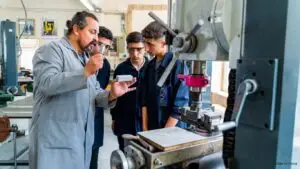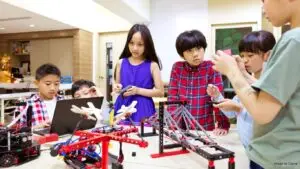Are you a student pondering your post-graduation prospects? Or perhaps an educator looking to equip your students with skills that transcend the traditional classroom setting? The landscape of education is evolving, and vocational education is emerging as a vital bridge between academic learning and real-world careers.
Gone are the days when a one-size-fits-all academic approach sufficed in preparing students for the workforce. Today, employers seek candidates with practical skills and hands-on experience. This shift in demand has propelled vocational education into the spotlight, offering specialized training in a myriad of fields, from healthcare and technology to hospitality and construction.
So, what exactly is vocational education, and why is it gaining traction? Unlike conventional academic pathways, vocational education focuses on equipping individuals with the specific skills and knowledge needed to excel in particular industries. It emphasizes practical, hands-on learning experiences, often in collaboration with industry partners, to ensure students are job-ready upon graduation.
One of the key advantages of vocational education is its alignment with industry needs. By partnering with employers and industry experts, vocational institutions tailor their programs to match current workforce demands. This means students graduate with skills that are not only relevant but also in high demand, increasing their employability and job prospects.
Moreover, vocational education offers a pathway to lucrative and fulfilling careers that may not require a traditional four-year degree. In today’s rapidly changing job market, certifications and specialized training can often lead to well-paying positions with ample opportunities for advancement. Whether it’s becoming a certified nursing assistant, a skilled tradesperson, or a computer programmer, vocational education opens doors to a wide range of career options.
Another notable trend in vocational education is the integration of technology. With digitalization reshaping industries across the globe, vocational programs are incorporating cutting-edge technologies like virtual reality simulations, augmented reality tools, and online learning platforms. These innovations not only enhance the learning experience but also prepare students for the digital demands of modern workplaces.
Furthermore, vocational education promotes lifelong learning and adaptability, essential traits in today’s dynamic job market. By instilling a mindset of continuous skill development, vocational institutions empower individuals to stay ahead of industry trends and remain competitive in their chosen fields.
In conclusion, vocational education is more than just an alternative to traditional academic pathways; it’s a strategic investment in the future of education and workforce development. By bridging the gap between classroom learning and real-world careers, vocational education equips individuals with the skills, knowledge, and confidence needed to thrive in today’s ever-evolving job market. Whether you’re a student exploring your career options or an educator shaping the next generation of professionals, embracing vocational education trends is key to unlocking a world of opportunities.








